Sweaty Crotch Rash: Understanding Jock Itch Symptoms, Causes, and Treatments
What are the symptoms of jock itch. How can you identify the causes of sweaty crotch rash. What are the most effective treatments for jock itch. How can you prevent recurring episodes of sweaty crotch rash.
What Is Jock Itch and How Does It Develop?
Jock itch, medically known as tinea cruris, is a common fungal infection that affects the groin area. It’s characterized by a red, itchy rash that typically appears in warm, moist areas of the body. While the term “jock itch” might suggest it only affects athletes, anyone can develop this condition, especially in hot and humid climates.
The fungus responsible for jock itch thrives in damp, warm environments, making the groin area an ideal breeding ground. Factors that increase the risk of developing jock itch include:
- Excessive sweating
- Wearing tight or non-breathable clothing
- Prolonged skin-to-skin contact
- Poor hygiene
- Weakened immune system
Recognizing the Symptoms of Jock Itch
Identifying jock itch early can help prevent its spread and facilitate quicker treatment. The most common symptoms include:
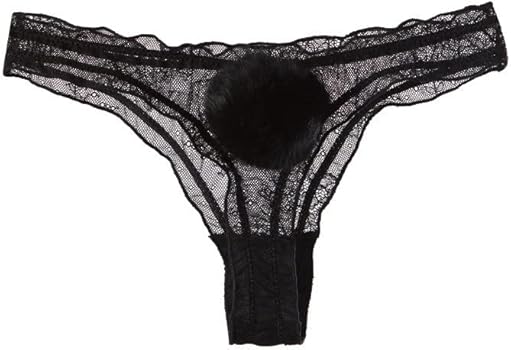
- Redness in the groin, inner thighs, or buttocks
- Persistent itching and burning sensation
- Flaking, peeling, or cracking skin
- A rash with a clearly defined border
- In some cases, blisters or pustules
Can jock itch spread to other parts of the body? Yes, if left untreated, the fungal infection can spread to other areas, particularly those with skin folds or that tend to be moist.
Differentiating Jock Itch from Other Skin Conditions
Jock itch can sometimes be confused with other skin conditions that affect the groin area. Here’s how to distinguish it from similar issues:
Intertrigo
Intertrigo is a inflammatory condition caused by skin-to-skin friction in moist areas. Unlike jock itch, it’s not fungal in nature, though it can lead to secondary fungal or bacterial infections if left untreated.
Heat Rash
Heat rash, or miliaria, occurs when sweat ducts become blocked. It appears as small, red bumps and is often accompanied by a prickling sensation. Unlike jock itch, heat rash can occur anywhere on the body and doesn’t have the characteristic ring-like pattern.
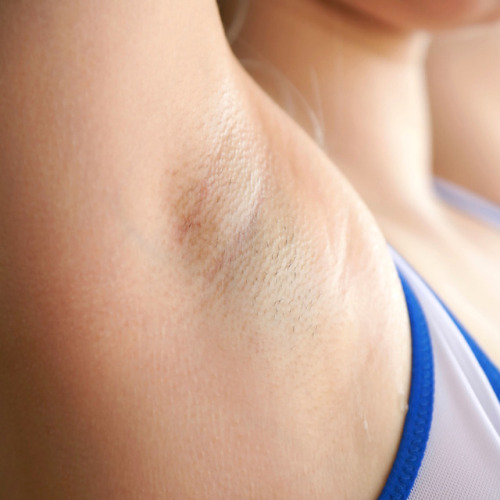
Psoriasis
Inverse psoriasis can occur in skin folds and may be mistaken for jock itch. However, psoriasis patches are typically smooth and shiny, without the scaly appearance often seen in fungal infections.
The Role of Moisture and Friction in Sweaty Crotch Rash
Sweaty crotch rash, which can lead to jock itch, is primarily caused by excessive moisture and friction in the groin area. This creates an environment where fungi can thrive. Several factors contribute to this condition:
- Extended periods of physical activity
- Obesity, which increases skin-to-skin contact
- Wearing damp or sweaty clothing for long periods
- Hot and humid weather conditions
- Certain medical conditions, such as hyperhidrosis
How does moisture exacerbate skin conditions in the groin area? Excess moisture softens the skin, making it more susceptible to damage from friction. This can lead to small breaks in the skin, providing entry points for fungi and bacteria.
Effective Treatment Options for Jock Itch
Treating jock itch typically involves a combination of antifungal medications and lifestyle changes. Here are some effective treatment options:

Over-the-Counter Antifungal Treatments
Many cases of jock itch can be successfully treated with over-the-counter antifungal creams, powders, or sprays. Common active ingredients include:
- Clotrimazole
- Miconazole
- Terbinafine
- Tolnaftate
These medications should be applied as directed, usually for 1-2 weeks, even if symptoms improve before the treatment period ends.
Prescription Medications
For more severe or persistent cases, a healthcare provider may prescribe stronger antifungal medications, such as:
- Oral antifungal drugs (e.g., fluconazole, itraconazole)
- Prescription-strength topical antifungals
- Combination treatments that include antifungal and anti-inflammatory components
Home Remedies and Lifestyle Changes
In addition to medication, certain home remedies and lifestyle changes can help manage jock itch:
- Keeping the affected area clean and dry
- Wearing loose-fitting, breathable clothing
- Using antifungal powders to reduce moisture
- Changing out of damp clothes promptly after exercising
- Using a separate towel for the groin area to prevent spread
How long does it typically take for jock itch to clear up with proper treatment? Most cases of jock itch respond to treatment within 1-2 weeks, but it’s important to continue treatment as directed to prevent recurrence.
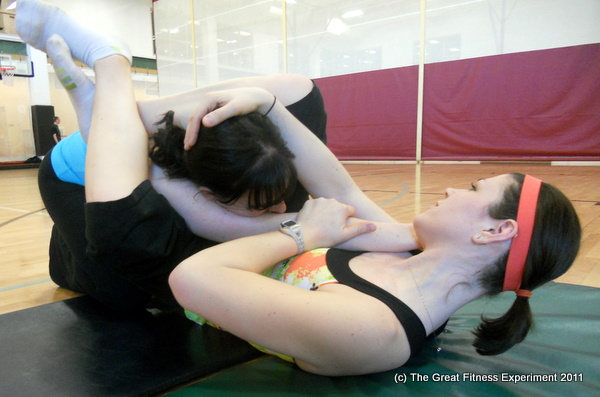
Prevention Strategies for Recurring Jock Itch
Preventing jock itch involves maintaining good hygiene and creating an environment that’s inhospitable to fungal growth. Here are some effective prevention strategies:
- Shower or bathe daily, especially after sweating
- Dry the groin area thoroughly after bathing
- Wear clean, dry underwear made from breathable fabrics
- Avoid sharing personal items like towels or clothing
- Use antifungal powders or sprays in high-risk situations
- Maintain a healthy weight to reduce skin-to-skin contact
Are there specific fabrics that can help prevent jock itch? Yes, moisture-wicking fabrics like certain synthetic blends or merino wool can help keep the groin area dry and reduce the risk of fungal growth.
When to Seek Medical Attention for Sweaty Crotch Rash
While many cases of jock itch can be managed at home, there are instances where medical attention is necessary. Consult a healthcare provider if:
- The rash persists or worsens despite over-the-counter treatment
- The rash spreads beyond the groin area
- You experience severe pain, swelling, or fever
- You have a weakened immune system
- The rash recurs frequently despite preventive measures
A healthcare provider can perform a proper diagnosis, rule out other conditions, and prescribe more potent treatments if necessary.

The Impact of Lifestyle Factors on Jock Itch Risk
Various lifestyle factors can significantly influence an individual’s risk of developing jock itch. Understanding these factors can help in implementing effective prevention strategies:
Physical Activity Level
Regular exercise is beneficial for overall health, but it can increase the risk of jock itch if proper hygiene isn’t maintained. Athletes and individuals who engage in frequent physical activity are particularly susceptible due to increased sweating and prolonged exposure to damp clothing.
Clothing Choices
The type of clothing worn, especially underwear and workout gear, can impact jock itch risk. Tight-fitting, non-breathable materials trap moisture and heat, creating an ideal environment for fungal growth. Opting for loose-fitting, moisture-wicking fabrics can significantly reduce this risk.
Personal Hygiene Habits
Good personal hygiene is crucial in preventing jock itch. This includes regular bathing, thorough drying of the groin area, and changing out of damp clothing promptly. Neglecting these habits can increase the likelihood of fungal infections.

Diet and Nutrition
While diet doesn’t directly cause jock itch, certain nutritional factors can influence susceptibility to fungal infections. A balanced diet rich in vitamins and minerals supports overall immune function, which can help the body resist fungal overgrowth.
How does diet affect the body’s ability to fight fungal infections? A diet high in sugar and refined carbohydrates can promote fungal growth, while a balanced diet with adequate protein, healthy fats, and antifungal foods (like garlic and coconut oil) may help inhibit fungal overgrowth.
The Connection Between Jock Itch and Other Fungal Infections
Jock itch is part of a family of fungal infections known as tinea. Understanding the relationship between jock itch and other fungal infections can help in prevention and treatment:
Athlete’s Foot (Tinea Pedis)
Athlete’s foot is caused by the same group of fungi that cause jock itch. In fact, individuals with athlete’s foot can spread the infection to their groin area through direct contact or by using the same towel for both areas.

Ringworm (Tinea Corporis)
Ringworm is a fungal infection that can occur on various parts of the body. The fungi causing ringworm are closely related to those responsible for jock itch, and the infections can spread from one area to another.
Nail Fungus (Onychomycosis)
While less directly related, nail fungus infections can sometimes be caused by the same types of fungi that cause jock itch. Proper hygiene and avoiding sharing personal items can help prevent cross-contamination.
Can treating one fungal infection help prevent others? Yes, addressing one fungal infection promptly can help prevent its spread to other parts of the body. It’s important to treat all fungal infections simultaneously to avoid reinfection.
The Role of the Immune System in Jock Itch Susceptibility
The immune system plays a crucial role in the body’s defense against fungal infections like jock itch. Individuals with weakened immune systems are more susceptible to developing these infections and may experience more severe or persistent cases.

Factors Affecting Immune Function
Several factors can impact immune function and, consequently, susceptibility to jock itch:
- Chronic illnesses (e.g., diabetes, HIV)
- Certain medications (e.g., corticosteroids, chemotherapy drugs)
- Stress
- Poor nutrition
- Lack of sleep
Boosting Immune Function
While some factors affecting immune function are beyond an individual’s control, there are ways to support and enhance immune health:
- Maintaining a balanced diet rich in fruits, vegetables, and lean proteins
- Getting regular exercise
- Ensuring adequate sleep
- Managing stress through relaxation techniques or mindfulness practices
- Staying hydrated
- Avoiding excessive alcohol consumption and smoking
How does a strong immune system help prevent fungal infections? A robust immune system can more effectively recognize and combat fungal invaders before they can establish an infection. It also helps maintain the skin’s natural protective barriers, making it harder for fungi to penetrate and cause issues like jock itch.

Navigating Social and Emotional Aspects of Jock Itch
While jock itch is a common and treatable condition, it can have social and emotional impacts on those affected. The discomfort, appearance, and potential embarrassment associated with the condition can lead to stress and anxiety.
Addressing Stigma
There’s often a stigma associated with fungal infections, which can lead to feelings of shame or embarrassment. It’s important to remember that jock itch is a common medical condition and not a reflection of personal hygiene or cleanliness.
Impact on Physical Intimacy
Jock itch can affect physical intimacy due to discomfort and concerns about transmission. Open communication with partners and following medical advice can help navigate these challenges.
Seeking Support
For individuals struggling with the emotional impact of jock itch, seeking support from healthcare providers, counselors, or support groups can be beneficial. These resources can provide strategies for coping with the physical and emotional aspects of the condition.
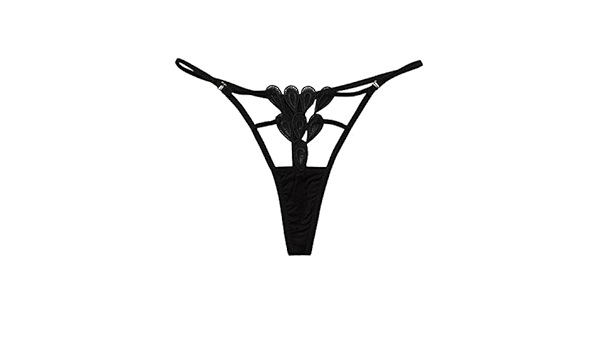
How can one maintain confidence while dealing with jock itch? Focusing on treatment adherence, practicing good self-care, and reminding oneself that the condition is temporary and manageable can help maintain a positive outlook. Additionally, educating oneself about the condition can provide a sense of control and reduce anxiety.
Future Directions in Jock Itch Research and Treatment
As with many medical conditions, research into jock itch and other fungal infections continues to evolve. Several areas of study show promise for improving prevention and treatment strategies:
Novel Antifungal Agents
Researchers are exploring new antifungal compounds that may be more effective or have fewer side effects than current treatments. Some studies are focusing on natural compounds with antifungal properties.
Microbiome Research
Understanding the role of the skin microbiome in preventing or promoting fungal infections could lead to new approaches in prevention and treatment. Probiotic treatments for the skin are an area of growing interest.

Advanced Diagnostic Methods
Developing quicker and more accurate diagnostic tools could help differentiate between fungal and bacterial infections, leading to more targeted treatments.
Preventive Strategies
Research into new materials for clothing and underwear that better prevent fungal growth could provide additional tools for preventing jock itch.
What potential breakthroughs in jock itch treatment are on the horizon? While it’s difficult to predict specific breakthroughs, areas of promise include targeted antifungal therapies that work with the body’s natural defenses, innovative delivery methods for medications, and personalized treatment approaches based on individual risk factors and skin microbiome composition.
As research progresses, individuals dealing with jock itch can look forward to potentially more effective and personalized treatment options in the future. In the meantime, adhering to current best practices for prevention and treatment remains the most effective approach to managing this common condition.
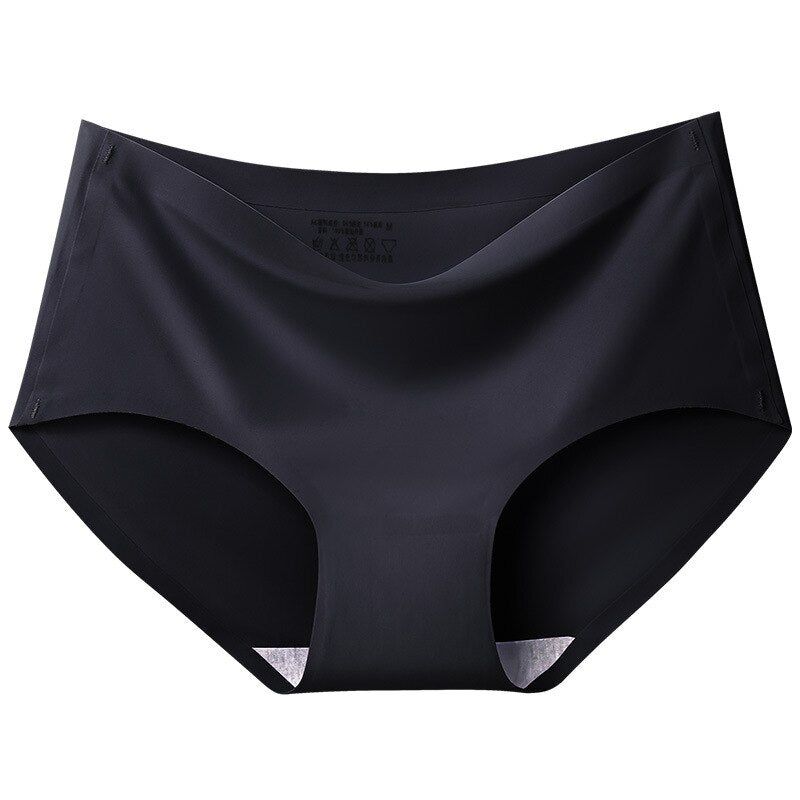
Causes, symptoms, pictures, and treatment
Intertrigo is a skin condition that causes a rash in skin folds, such as under the breasts, in the groin, or in stomach folds. The rash may be sore or itchy.
It happens when areas of moist skin rub together. Bacteria and yeast can grow in this environment, leading to an infection.
In this article, we describe what intertrigo is, what it looks like, and what causes it. We also cover diagnosis, treatment, and prevention.
Intertrigo is a skin condition that happens when folds of skin chafe against each other.
It usually develops in the inner thighs or armpits, or under the breasts or tummy fold.
Some people may experience yeast or bacterial infections in the folds of skin.
Areas of moist skin rubbing together cause intertrigo. The warm, damp environment makes the skin conducive to irritation and the growth of yeast and bacteria, which can lead to an infection.
While it can happen at any age, intertrigo tends to affect infants, older people, and those with a reduced ability to move around. In babies, it is often called diaper rash. Most cases occur in hot or humid environments and during the summer.
In babies, it is often called diaper rash. Most cases occur in hot or humid environments and during the summer.
Intertrigo is also more common in adults with incontinence, obesity, diabetes, or a weakened immune system.
Specific health conditions that can contribute to the development of intertrigo include:
Inverse psoriasis
Also known as intertriginous psoriasis, this form of psoriasis develops in the folds of the skin. It can look red and shiny.
Hailey-Hailey disease
Hailey-Hailey disease is a rare genetic disorder that causes skin cells to stick together and breaks down the layers of the skin.
People with Hailey-Hailey disease usually experience blisters and irritations on the neck, armpits, and genitals and in the folds of the skin.
Pemphigus
There are different types of pemphigus, but they all happen when the body’s immune system attacks the healthy cells in the top layer of the skin.
It typically causes blisters in the mouth, nose, throat, eyes, or genitals.
Bullous pemphigoid
A fault in the immune system causes bullous pemphigoid. People with the condition can develop mild, itchy welts or more severe blisters on the skin. These tend to appear on areas of the skin that flex or move.
Intertrigo looks like a red, raw rash on the skin. It may feel sore or itchy, and it can sometimes ooze.
It can develop in any fold of the skin. The most commonly affected areas of the body include:
- the inner thighs
- under the breasts
- in the fold of skin underneath a protruding belly
- the groin
- between the buttocks
- in the webs of the fingers
- in the webs of the toes
Intertrigo may develop in one or more of these places.
It will often be a specialist skin doctor, or dermatologist, who diagnoses intertrigo. They will do this by inspecting the skin and asking a series of questions about the person’s symptoms.
If the dermatologist suspects that a yeast or bacterial infection has developed in the skin fold, they may take a swab and send it to a laboratory for analysis.
An article in the Journal of the Dermatology Nurses’ Association offers the following advice on treating intertrigo:
- Wash the affected area with ketoconazole 1% shampoo, which is available from most drugstores. People should leave it on for 2–5 minutes and then rinse it off.
- Use a hairdryer on a low setting to ensure that the area is completely dry.
- Mix equal amounts of clotrimazole 1% cream (or miconazole 1% cream) and hydrocortisone 1% cream and apply a thin layer to the affected area. People should do this twice a day until the rash is clear, which may take 3–8 weeks.
- Once the rash has cleared, continue to use the ketoconazole 1% shampoo as soap in the affected area at least once a week.
- Dry the skin with a hairdryer after every bath or shower, or whenever it feels particularly damp.
The best way to prevent intertrigo is to keep the area dry. People who experience the condition due to obesity can speak to a doctor about ways to lose weight and reduce the risk of skin complications.
The American Osteopathic College of Dermatology suggest that people prevent intertrigo by:
- placing a wad of absorbent material, such as cotton, in the affected fold to absorb sweat
- using antiperspirants
- washing daily with an antibacterial soap
- dusting the affected area with an absorbent antifungal powder once it is clean and dry
Anyone who finds that the problem keeps coming back should speak to a doctor.
Intertrigo is a skin condition that happens when areas of moist skin rub against each other. It causes a red, raw-looking rash and can lead to yeast and bacterial infections.
It can happen to anyone, but it is most common in babies, older people, individuals with mobility problems, and those with obesity.
People can easily treat the rash at home with over-the-counter creams and lotions. They can also prevent it from coming back by keeping the area clean and dry.
Anyone who experiences multiple incidences of intertrigo should speak to a doctor.
6 Itchy Causes of Groin Sweat Rash
You come in contact with a lot of things as you go about your day. As someone who is on the go, the last thing you want is for groin sweat rash to slow you down.
It is a skin condition that can impact everyone. If you have white bumps, red bumps, inflammation, or an itching sensation around your groin area, you might be a victim of groin sweat rash.
What could have caused this to happen? What can you avoid in the future to prevent this from happening again? How do you get rid of it?
We’ll walk you through six of the biggest causes so you can avoid them in the future and what you can do to make your symptoms go away.
1. Eczema
Eczema can cause your skin to become dry, itchy, and break into rashes. Scratching at eczema patches can make irritation worse. If you have eczema, you can experience periodical flares that can span days, weeks, or years.
Eczema causes rashes in many areas and can cause groin sweat rash to occur. A variation in your genes that prevents your skin from protecting your body against irritants and bacteria is what causes Eczema.
A variation in your genes that prevents your skin from protecting your body against irritants and bacteria is what causes Eczema.
When your body is unable to remove irritants from your skin, it can get into your pores. Your skin is also more likely to be sensitive to irritants.
2. Jock Itch
Jock itch and groin sweat rash go hand in hand. If you have one, you might have both. The fungal infection that creates red, itchy rashes for jock itch can also cause the bumps and discoloration associated with a sweat rash on groin area.
Warm, moist areas on your body are the perfect home for this sweat rash. If you start seeing red areas and bumps starting to take shape, you may have groin sweat rash forming. It can also contribute to the early stages of jock itch.
It is important to understand that a general sweat rash on the groin isn’t always a fungal infection like a jock itch. You should still clean any clothing that came in contact with the rash because it will prevent any dirt or potential bacteria from spreading.
3. Chafing
Chafing happens when two dry areas of your skin rub against each other for prolonged periods. This rubbing wears down on your skin and causes irritation and redness. Not all chaffing will cause groin sweat rash, but it can happen because of chaffing.
A big reason for sweat rash on the groin area is sweat not being able to evaporate. When two parts of your skin rub together, it prevents the sweat from evaporating. The dirt and debris left behind cause irritation and groin sweat rash.
Your groin area has other types of bacteria that can build up in that area. When combined with the chaffing, it can make the irritation even harder to tolerate.
4. High Levels of Sweating
The amount you sweat is generally determined by genetic factors. Sweating helps regulate body temperature and remove bacteria or contaminants from your body.
Increased levels of sweating can contribute to heat sweat rash groin. Removing bacteria and contaminants from your body only works when your pores are open. The sweat needs to be able to evaporate for this process to work.
The sweat needs to be able to evaporate for this process to work.
Blocked or clogged pores prevent sweat from evaporating. The dirt and bacteria in sweat will sit on your skin for a longer period, causing irritation that results in groin sweat rash.
Sweat rash also needs moisture to form. moisture trapped in one area can get heated up. The heated moisture will also cause skin irritation.
5. Tight Clothing
Tight clothing is a huge factor when it comes to this type of sweat rash. Tight clothing clings to your body and isn’t always breathable. Sweat can also make irritation from tight clothing happen faster.
This clothing can rub against your hair follicles. When the rubbing happens for too long, it can begin to irritate your skin. The irritation will begin with the top layer of your skin and go deeper until it hits your pores.
Tight clothing can also prevent air from circulating across your skin and helping the sweat evaporate. When clothing isn’t breathable, the sweat gets trapped in your pores.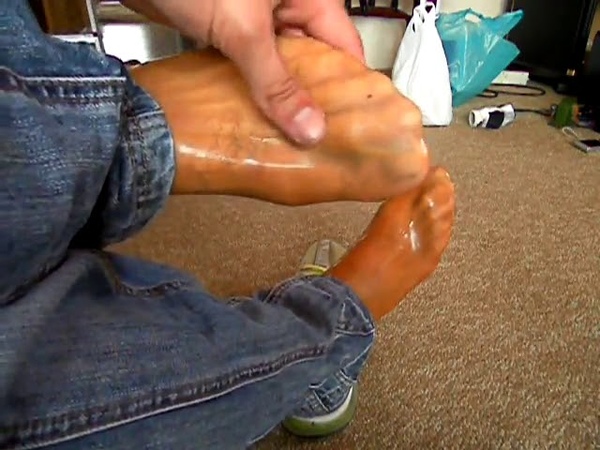
Your clothing can also absorb sweat. This can cause a sweat rash to get worse because the dirt and bacteria in your sweat are sitting against your skin. It will rub against it with motion and result in further irritation.
6. Clogged Pores
Many of the factors that can cause groin sweat rash all have something in common: clogged pores. Dead skin cells or extra oil built up in your pores causes clogging. Sweat removes the debris under normal conditions, but it can’t during a blockage.
Sweat will get trapped under your skin. This is why many of the bumps you see when you get groin sweat rash look centered around your pores. The more you sweat, the bigger the build-up and the more intense the rash.
How to Treat It
If you want to find a cure, the most important thing you will need is patience. It can take time for the rash to clear completely.
You can use ointments such as lotion to treat your rash. This will help soothe the irritation. Leaving your skin in a cool, open area without restriction can also help the rash go down and clear up.
The best thing you can do for groin sweat rash is work with preventative measures. Preventative measures like wearing loose clothing are great when combined with a drying powder.
Drying powder will absorb any moisture trapped on your skin. Once absorbed, the moisture won’t become an irritant. The drying powder can prevent chafing as well.
Get Treatment for Groin Sweat Rash Now!
If you’re tired of your groin sweat rash running your daily activities or workouts, it’s time to get it treated. Preventative measures can also help ensure this doesn’t happen again in the future. Don’t let a rash stop you from living your life to the fullest.
Using Nutdust to protect your skin against chafing and moisture can prevent groin sweat rash from dragging you down. Check out our product page today to find out which type of Nutdust is perfect for you and you’re daily life.
Excessive sweating and pregnancy – New life
See also
Pregnancy and coffee
- 15 September 2020
- New life
Most pregnant women complain of sweating or hyperhidrosis, which usually develops at night.
Sweating is very common during pregnancy. Moreover, this is not the result of an increase in air temperature or the use of any food. All this, as a rule, is associated with a change in the hormonal background. In addition to hormonal changes, one of the potential causes may be an increase in BMI (body mass index) above the acceptable norm. Therefore, it is desirable to control the weight.
In the first trimester, against the background of natural changes in the endocrine system and hormonal levels, the secretion of sweat glands increases, which can change the structure of the skin – radiant and sensitive skin becomes oily and dry.
The second trimester is characterized by the stabilization of perspiration, and the skin condition is normalized. However, the body’s need for water increases, which of course determines the amount of sweat produced.
Also, one of the important factors should not be overlooked – one of the causes of increased sweating during pregnancy can be thyroid pathology.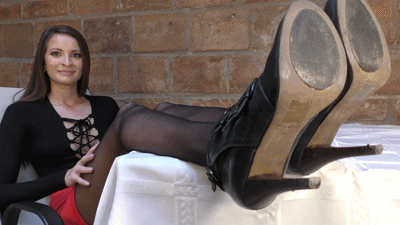 That is why a thyroid test is carried out and thyroid hormone (TSH) is determined in the blood in the first trimester (often up to 13 weeks), especially since Georgia is considered an endemic focus.
That is why a thyroid test is carried out and thyroid hormone (TSH) is determined in the blood in the first trimester (often up to 13 weeks), especially since Georgia is considered an endemic focus.
What method can a pregnant woman turn to for excessive sweating
It should be remembered that sweating during pregnancy is not dangerous and does not require treatment, in case of excessive sweating, you can turn to simple hygiene procedures using a contrast shower. To avoid irritating dry skin, use only hypoallergenic deodorants, balms, and skin moisturizers.
General advice for pregnant women:

We wish you good health!
pregnancy
- TwitCount Button
I hesitate to ask: why am I sweating a lot? An endocrinologist tells how to deal with it
In the “I’m embarrassed to ask” section, we collect questions that Belarusians are usually embarrassed to ask friends and professionals, but often google. Today, an endocrinologist tells why we sometimes sweat a lot and how to sweat less.
Elena Mikhailovna Myslivchik
endocrinologist 1st category
► Why do people sweat at all?
We sweat to cool our body, a process called thermoregulation. The hypothalamus maintains a normal body temperature, on average, from 35.5 to 37 ° C and catches signals from the receptors of the skin and internal organs: if it is cold, it causes shivering and vasoconstriction, and if it is hot, it turns on the sweating mechanism. The skin, covered with perspiration, cools the surface of the body and protects against overheating during stress, adverse external conditions, sports, etc.
The skin, covered with perspiration, cools the surface of the body and protects against overheating during stress, adverse external conditions, sports, etc.
► Why do so many people sweat a lot even when they’re not hot?
This can occur reflexively during emotional experiences, pain, hot or spicy food, alcohol and a number of chemicals . Increases sweat output also wearing tight clothes and shoes made of synthetic materials, staying in stuffy rooms with high humidity, improper drinking regimen . All this is physiological hyperhidrosis, a protective function of the body from overheating.
► Why do we sweat when we are nervous? And how to sweat less in such situations?
Stress sweating is an instant reaction of the body to emotional stimuli, whether it be excitement, joy or fear. Such sweat can be released over the entire surface of the human body, but the maximum concentration of sweat glands is concentrated in the face, palms, feet and armpits. Unlike regular sweating associated, for example, with hot weather, stress sweating occurs much faster.
Unlike regular sweating associated, for example, with hot weather, stress sweating occurs much faster.
Sweating less in such situations will help, first of all, competent stress prevention: auto-training, breathing exercises, yoga, swimming . The help of a psychologist or psychotherapist will also help. And, of course, personal hygiene and the use of products that protect against sweat are important.
► Why do I sweat a lot when I sleep?
This is called nocturnal hyperhidrosis. It can be a symptom of one of the diseases: fever, infection, hypoglycemia in diabetics, hormonal disorders, menopause.
But often night sweats are due to high temperature and poor ventilation of the room, synthetic or hot pajamas and bed linen. Also, people sweat a lot in their sleep if they have previously consumed alcohol, coffee, spicy, smoked and very salty foods.
► How much sweating is normal?
A healthy person, even at rest and at a comfortable ambient temperature, produces about 500–700 ml of sweat per day . With a high level of activity, stress or heat, the figure can rise to 2-3 liters.
With a high level of activity, stress or heat, the figure can rise to 2-3 liters.
► If I sweat more than normal, will it harm my body?
If the whole body sweats profusely, this may be a sign of one of a number of diseases, most often associated with the endocrine system. This situation requires an appointment with a specialist for timely diagnosis. In addition, severe sweating can lead to dehydration and salt imbalance.
► Is there a rule for how often sweat should be washed off?
Ideally, with excessive sweating, you should take a shower twice a day – in the morning and in the evening. At the same time, it is undesirable to use soap and washcloth every time: too intensive washing harms the natural protective mechanism of the skin.
► And if the skin is irritated by sweat, how can it be treated?
Most types of rashes and irritations from sweat are a natural reaction to an irritant. If a person is sensitive to perfumes or fragrances, prone to eczema, you need to use antiperspirants and unscented body care products.
An emollient or moisturizer can be used to help maintain the skin’s natural balance. Personal hygiene is obligatory, it is good to take a contrast shower with hot and cold water, without heat. If more serious skin manifestations occur, you should consult a doctor.
► They say blocking sweat is bad. This is true?
Not really. The main task of sweating is thermoregulation, which you can provide yourself with in other ways. The sweat glands remove very few toxins, and if we close some pores, we do not harm the body: the kidneys are much better at removing toxins.
No need to be afraid of blocking pores in one place, the body compensates for everything through another part of the body.
► What is the difference between deodorant and antiperspirant?
Deodorant is a means of masking the smell of sweat. An antiperspirant, on the other hand, blocks perspiration and acts on the apocrine sweat glands. There are also deodorants-antiperspirants – 2 in 1, universal products that not only reduce sweating, but also remove odor.
The main active substance of any antiperspirant is aluminum salts, or aluminum chlorides. They block the ducts of the glands. Conventional products contain only 2-3% of these salts, and in special medical products their amount is usually five times higher than the norm, so they need to be used only a few times a week.
► What about natural mineral deodorants?
Mineral deodorants contain natural mineral salt crystals, making them a great alternative to the artificial ingredients found in conventional deodorants. This is nothing more than “aluminum-potassium alum”, which have long been sold in pharmacies and used for various external inflammations, dermatitis, as they are a powerful natural antibacterial drug.
However, such deodorants are recommended for those who have moderate sweating, people with increased secretion of sweat glands should look for other means.
► What is the best product to buy?
Everything is individual. The choice depends on the sensitivity of the skin: if it is prone to allergies, you need to choose more natural products.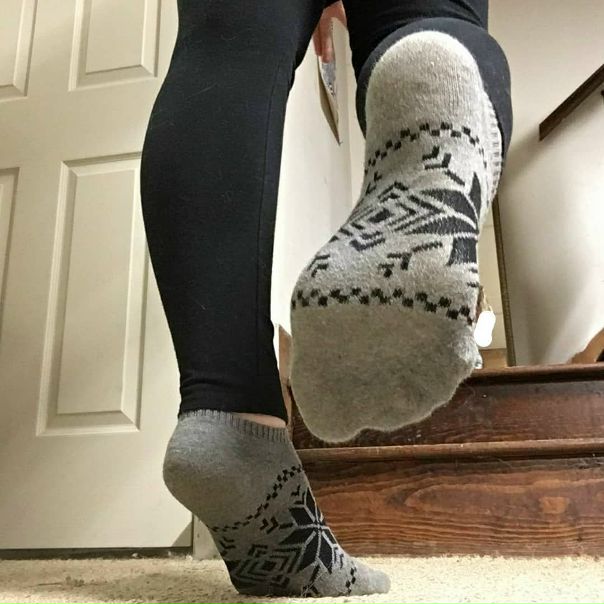 If you use the product not constantly, but in special cases and you need to qualitatively block the sweat glands, you can use synthetic products. If there is a significant skin problem, it is better to consult a specialist and find a solution together.
If you use the product not constantly, but in special cases and you need to qualitatively block the sweat glands, you can use synthetic products. If there is a significant skin problem, it is better to consult a specialist and find a solution together.
And, of course, you need to choose not only an effective, but also a safe remedy. Often, antiperspirants contain dangerous ingredients: aluminum, parabens, triclosan, propylene, and alcohol.
► Is it better to buy spray, dry or roll-on deodorants?
It’s all individual, rely on your preferences, skin features. Roller (liquid) is absorbed for a long time, and it has to be applied long before putting on clothes. Solid (dry) applies quickly and does not leave a wet residue, but it contains alcohol, which can cause dryness and irritation of the skin. The spray won’t leave wet marks on clothes, but it’s not very economical.
► Is it necessary to use such products?
If sweating causes severe discomfort, affects your psychological state, prevents you from leading a socially active life, irritates your skin, it is advisable to use them.
► How to use them correctly?
Apply antiperspirants only to clean and dry skin. It is better to do this at night: the sweat glands are less active, and this helps to block the ducts more effectively.
► Super products with silver ions are often advertised. Are they not dangerous?
It is important to remember that such products should not be used more than once every 5-6 days. They are very effective against profuse sweating and last quite a long time.
► How do they work?
They block the pores at the site of application, which redirects perspiration to other parts of the body.
► Botox is sometimes injected into the armpits to reduce sweating. Is this normal or harmful to the body?
Local hyperhidrosis is usually treated in this way: most often in the armpits and in the area of the palms. The principle of action of botulinum toxin is that the nerve impulses that provoke the work of the sweat glands are blocked, due to which the sweat simply ceases to be released.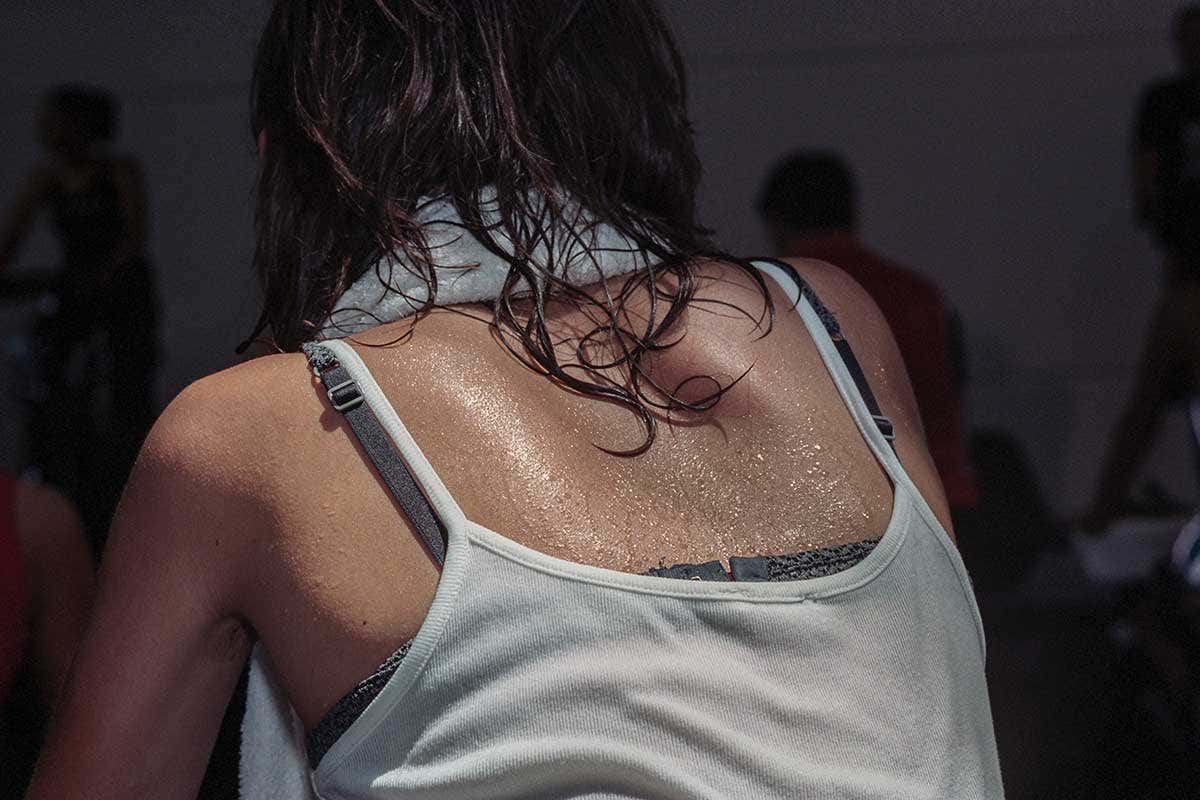 And, what is good, this procedure is effective for a long time – up to 6-8 months.
And, what is good, this procedure is effective for a long time – up to 6-8 months.
This method is quite safe and effective, provided that the procedure is performed by an experienced and certified specialist.
► Should it be done only when indicated?
Of course, this is not done on a whim, and usually in the centers where it is carried out, the patient is first examined. If he does not have chronic diseases, such as diabetes, but simply the presence of hyperhidrosis, then this procedure is indicated and quite effective.
► Is hyperhidrosis a congenital disease?
Hyperhidrosis is often a congenital feature of the body, in which a person has an increased number of sweat glands. In this case, it is usually hereditary. But often hyperhidrosis appears as a consequence of a disease.
► How to diagnose it?
If you notice that you are sweating a lot, see your doctor. He will carefully collect an anamnesis, examine you and, if necessary, conduct additional tests to understand whether this is a congenital feature or a consequence of the disease.
Examination can determine the degree of hyperhidrosis. For a mild degree, wet palms and face are characteristic, for an average degree – drops of sweat, for a severe degree – trickles of sweat flowing down the skin.
► Can it be cured?
Congenital features of the body cannot be completely cured, but there are methods of prevention. The work of the sweat glands is always provoked by something, and if these factors are eliminated, then there will be much less sweat. Of course, you can still use cosmetic and cosmetic products and procedures, such as antiperspirants, Botox.
► And if it is not treated, what will be the consequences?
It can be anything we have already talked about: skin irritation, unpleasant secondary diseases, such as fungal infections, psychological discomfort, secondary skin lesions. All this worsens the quality of life of a person and his social activity.
► Is it possible to understand from sweat and its amount that there are health problems?
Possible. It is worth alerting if sweating does not go away in rather cool weather, if there is noticeably more sweat, if the intensity of the smell has changed, if sweat leaves stains of an atypical color on clothes. Here are the main conditions in which secondary hyperhidrosis develops:
It is worth alerting if sweating does not go away in rather cool weather, if there is noticeably more sweat, if the intensity of the smell has changed, if sweat leaves stains of an atypical color on clothes. Here are the main conditions in which secondary hyperhidrosis develops:
1. Endocrine diseases and conditions: increased thyroid function (hyperthyroidism), pheochromocytoma, diabetes mellitus, acromegaly, menopause, etc. panic attacks, phobic disorders, Parkinson’s disease, polyneuropathy, stroke, etc.
3. Infectious diseases: tuberculosis, malaria, brucellosis, helminthiases, sepsis, AIDS, etc.
4. Diseases of the cardiovascular system: ischemic heart disease, hypertension, etc.
5. Kidney diseases.
6. Tumor diseases.
7. Genetic diseases.
8. Alcoholism, action of narcotic substances, mushroom poisoning, organophosphorus compounds.
All this is very individual, and with such a problem it is better to go first to a therapist who will assess your condition and refer you to the right specialist.
► Do women and men sweat differently?
Not much. Although women have more eccrine sweat glands than men, they tend to sweat less because the male glands are more active.
But at the same time, in women, the apocrine glands are more often involved in the work due to, for example, menopause, hormonal disruptions, pregnancy. And women tend to be more emotional, which makes them more prone to stress.
► What should be the normal smell of sweat?
It’s all very individual. Sweat itself is odorless, what we feel is influenced by other factors: the characteristics of the body, how much a person ate spicy, smoked and fatty, how a person takes care of himself, etc. Also, the smell can appear when the apocrine glands that secrete a certain secret are more active.
► Why do some people sweat but don’t smell, while others have a strong smell?
The feet are an area of the body that is constantly subjected to mechanical stress, due to which there are more dead skin cells. They mix with sweat and give a specific smell. But the smell of feet will be stronger for those who do not observe hygiene well enough. Again, low-quality tight shoes, synthetic socks, infrequent change of socks increase the unpleasant odor.
They mix with sweat and give a specific smell. But the smell of feet will be stronger for those who do not observe hygiene well enough. Again, low-quality tight shoes, synthetic socks, infrequent change of socks increase the unpleasant odor.
► That is, if your feet suddenly smell strongly, you need to pay attention to shoes and hygiene?
Yes, but it can also be secondary diseases, such as a fungal infection of the skin, with which you need to go to a dermatologist.
► Is it bad at all when your feet sweat?
Feet sweat even in absolutely healthy people, if you wear shoes out of season, wear synthetic socks or shoes made from non-natural materials. Sweating feet, left without proper attention, always leads to consequences – bacterial and fungal infections, skin injuries.
When all provoking factors are excluded, and sweating brings discomfort, consult a doctor: he will prescribe an examination and establish the true cause.
► What should I do if my palms are constantly sweaty?
Constantly sweaty palms are most often the result of some disease: endocrine pathology, diabetes, infection. Of course, all this must be treated.
Of course, all this must be treated.
Another common cause of sweaty palms is psychogenic factors, the same stresses. In this case, you need to deal with the correction of the emotional sphere of a person, go to the doctor with this.
► Do I need to use foot deodorant?
Why not? If you feel discomfort due to sweat, use it to your health. The problem of leg hyperhidrosis is one of the biggest, which is why there are so many products on the market: creams, ointments, antiperspirants, sprays, powder. In addition, this way we prevent the appearance of secondary bacterial and fungal diseases.
► I often go to the sauna, is it harmful?
This is a trick question. In the sauna, a person releases a fairly large amount of sweat, and this sweat removes toxins from the body. In general, the sauna is considered quite useful for the cardiovascular and respiratory systems, and besides, it is a good way to relax, enjoy the procedure, but it is not useful for everyone.
